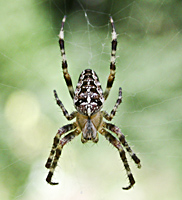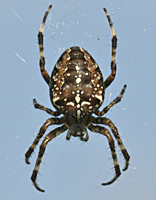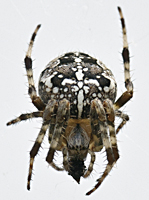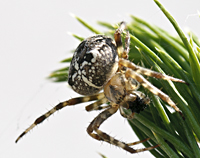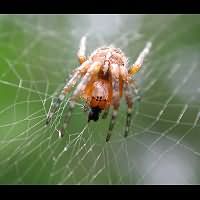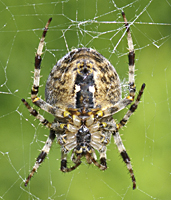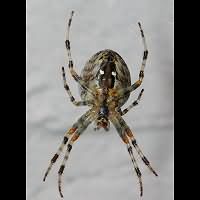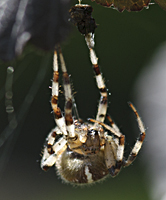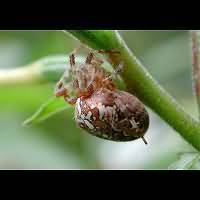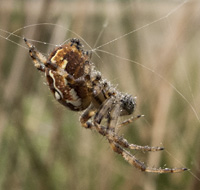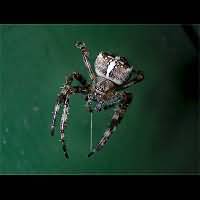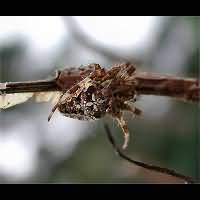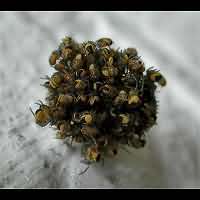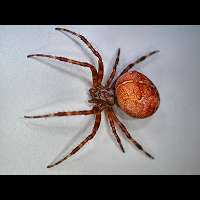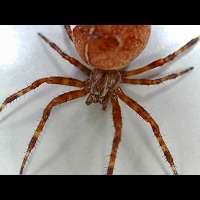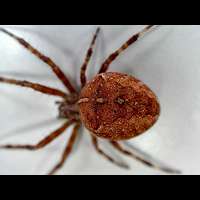[All pictures of garden wildlife on this page are thumbnails. Click on any thumbnail for a large format to be displayed.]
European Garden Spider (Araneus diadematus)
The best known spiders in Western Europe are the Orb-web Spiders. Especially in autumn they are literally everywhere! They all build vertical webs, that can be rather huge. It consists of a number of basic wires. These are not sticky and used by the spider as foundation for the web. Attached to it are numerous sticky wires. One strong wire runs all through the net: the signaling wire. When the spider is not in de centre of the web, it is at the edge, hiding under a leaf or something with two legs holding the signaling wire. It feels the movements in the web through this wire and this way knows when a prey has been caught. The best known spider in our part of the world is undoubtedly the Garden Spider. In the fall they are literally all over the place. Like with many spiders, the female is bigger than the male. The male has to be very cautious when approaching the female, because she will eat him without any hesitation or remorse whatsoever. Some male spiders have a macabre feature - they can still fertilize the eggs while being eaten!
This spider can usually easily be identified by the cross pattern on the top of the abdomen. This cross is usually clearly visible.
Left photo shows a male, middle and right photos show females.
Reaching up to 13mm, the Garden Spider is a relatively larde spider in Europe. The males are usually slimmer than the females.
In one of the pictures here you see an adult female actually eating the wires. She does for a good reason: spiders do recycle their webs.
Garden Spider is Europe's most famous spider.
In the picture below you see a nest full of little baby Garden Spiders. The mother deposits the eggs in a small cocon, which looks more like a little web. After hatching the spiderlings stay together for a short time in a small web they produce themselves. They all hatch at the same time. The web has wires running in all directions and the spiderlings are scattered all over it. When attacked by a predator, e.g. a bird, they run away quickly, leaving the predator behind in a confused state of mind. Little later they will quickly return to the web.
Little baby spiders to the right do not look like their parents at all!
Just like many other orb-web spiders Garden Spiders are extremely variable, especially females. Usually there is a marking on top resembling a cross, but the cross is not always that clear. Especially towards the end of the season the cross pattern disappears.These individuals can then be mistaken for some related species, such as Araneus quadratus. To be sure about the species one has to pay attention to the epigyne (the female sexual organ). Luckily it is usually quite visible in orb-web spiders. The body colours vary as well: besides gray and brown it can sometimes yellowish or reddishs Some animals are strikingly bright orange. Outside Europe this animal is referred to as the European Garden Spider.
This reddish brown Garden Spider looks a lot like similar other species of orb-web spiders.

© Copyright 1998-2024 gardensafari.net (Hania Berdys)

 English / engels
English / engels  Dutch / nederlands
Dutch / nederlands